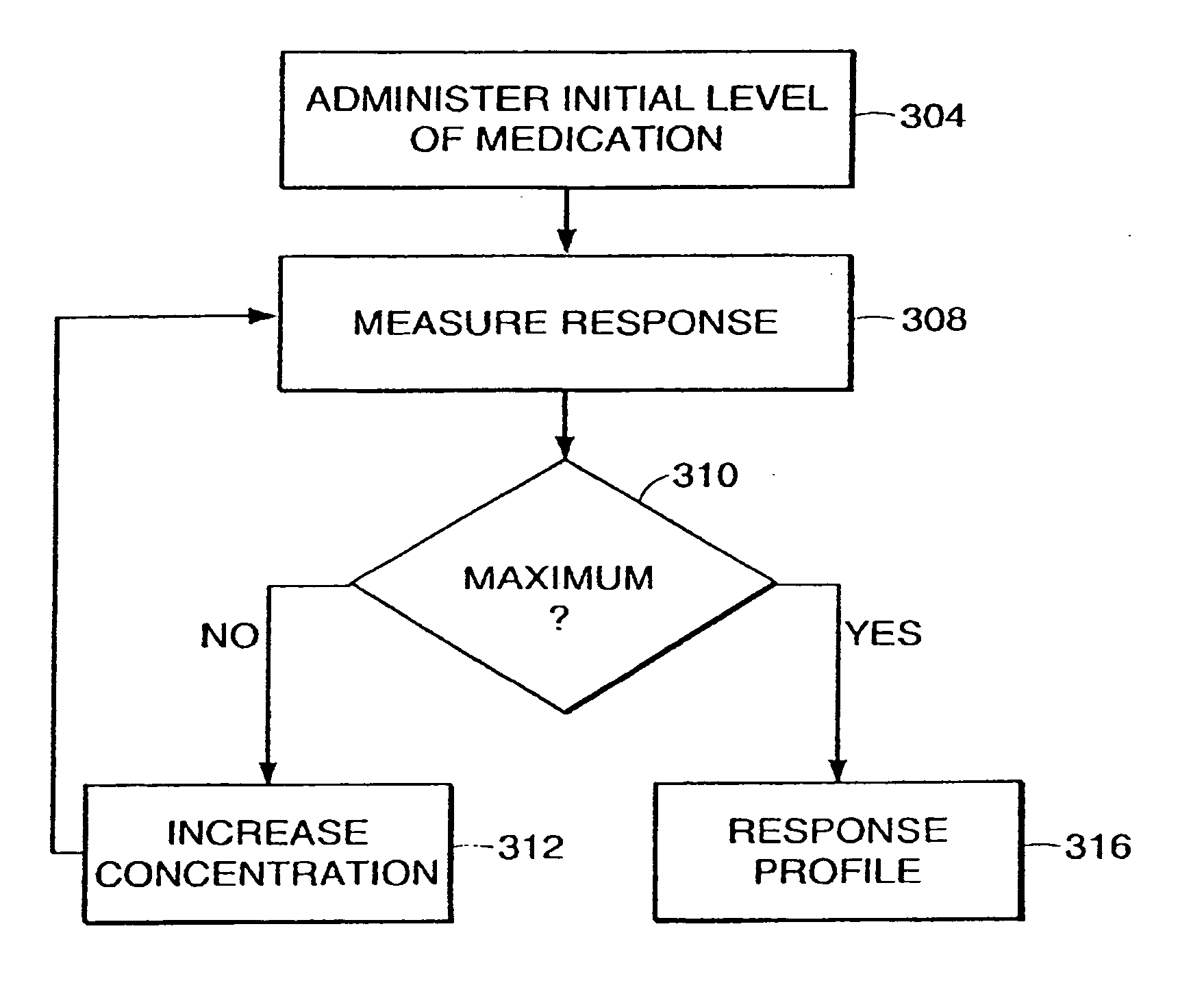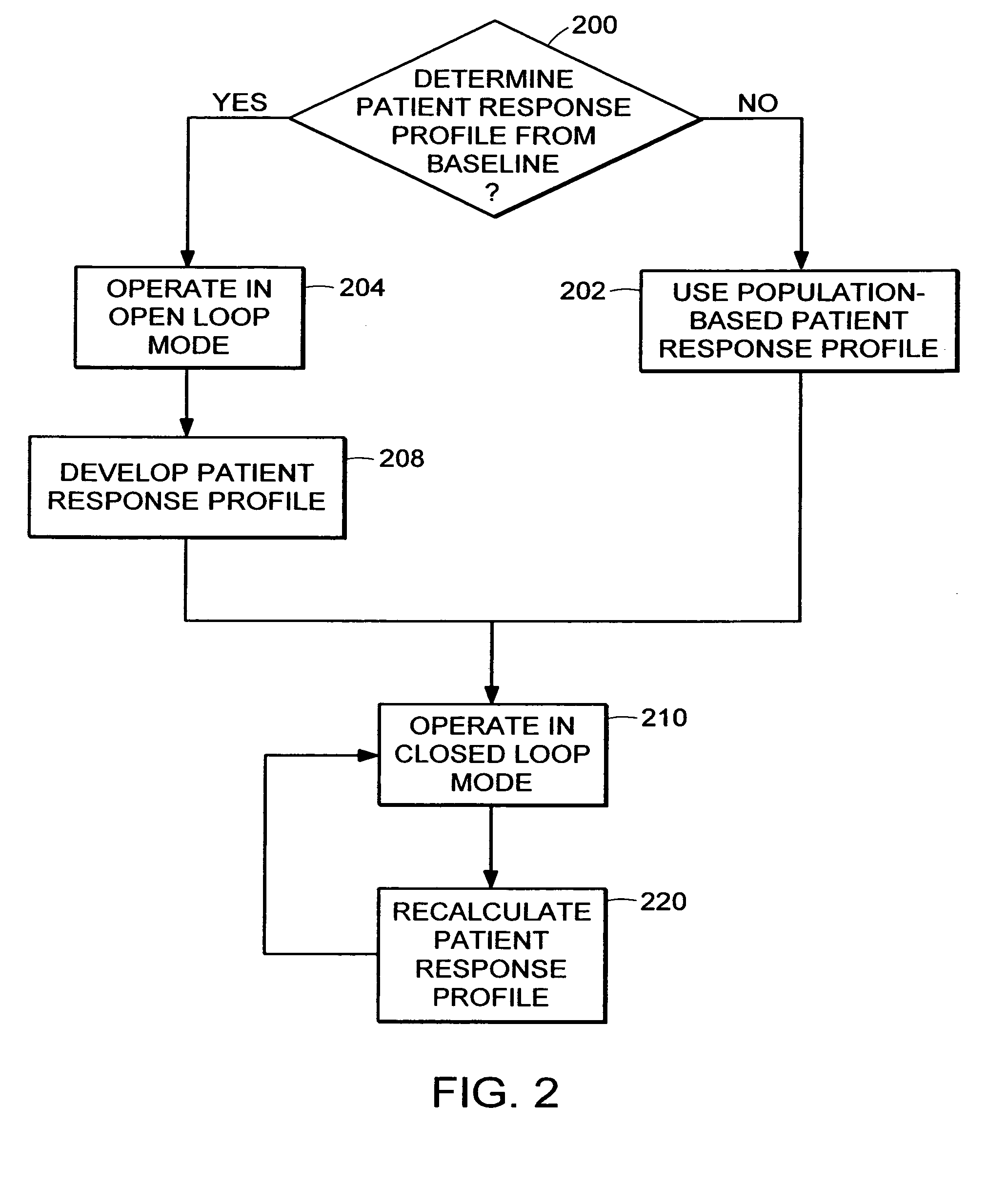System and method for adaptive drug delivery
a drug delivery and adaptive technology, applied in the field of closed loop system and adaptive control of the administration of drugs, can solve the problems of unfavorable unfavorable reporting of awareness during surgery in unparalyzed patients, and even more difficult clinical evaluation of anesthetic depth. , to achieve the effect of changing the response of patients
- Summary
- Abstract
- Description
- Claims
- Application Information
AI Technical Summary
Benefits of technology
Problems solved by technology
Method used
Image
Examples
example environment
[0043] The invention can be implemented in any medication delivery environment where it is desired or required to achieve a predetermined effect, even where external stimuli may affect the dose / effect relationship. One such example environment is the intravenous infusion of anesthetic medication to a patient to achieve a desired depth of anesthesia. The invention is from time to time described herein in terms of this example environment. Description in these terms is provided for ease of discussion only. After reading this description, it will become apparent to one of ordinary skill in the art that the present invention can be implemented in any of a number of different medication delivery environments where it is desirable to monitor or adjust the delivery of medication to achieve a desired result.
Controlled Feedback Drug Delivery
[0044]FIG. 1 is a block diagram generally illustrating an application of a medication delivery controller in accordance with one embodiment of the inv...
PUM
 Login to View More
Login to View More Abstract
Description
Claims
Application Information
 Login to View More
Login to View More - R&D
- Intellectual Property
- Life Sciences
- Materials
- Tech Scout
- Unparalleled Data Quality
- Higher Quality Content
- 60% Fewer Hallucinations
Browse by: Latest US Patents, China's latest patents, Technical Efficacy Thesaurus, Application Domain, Technology Topic, Popular Technical Reports.
© 2025 PatSnap. All rights reserved.Legal|Privacy policy|Modern Slavery Act Transparency Statement|Sitemap|About US| Contact US: help@patsnap.com



